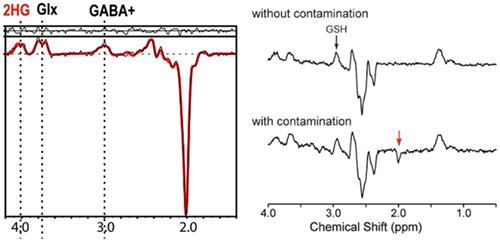当前位置:
X-MOL 学术
›
NMR Biomed.
›
论文详情
Our official English website, www.x-mol.net, welcomes your feedback! (Note: you will need to create a separate account there.)
Spectral editing in 1H magnetic resonance spectroscopy: Experts' consensus recommendations
NMR in Biomedicine ( IF 2.9 ) Pub Date : 2020-09-18 , DOI: 10.1002/nbm.4411 In-Young Choi 1 , Ovidiu C Andronesi 2 , Peter Barker 3 , Wolfgang Bogner 4 , Richard A E Edden 3 , Lana G Kaiser 5 , Phil Lee 6 , Małgorzata Marjańska 7 , Melissa Terpstra 7 , Robin A de Graaf 8
NMR in Biomedicine ( IF 2.9 ) Pub Date : 2020-09-18 , DOI: 10.1002/nbm.4411 In-Young Choi 1 , Ovidiu C Andronesi 2 , Peter Barker 3 , Wolfgang Bogner 4 , Richard A E Edden 3 , Lana G Kaiser 5 , Phil Lee 6 , Małgorzata Marjańska 7 , Melissa Terpstra 7 , Robin A de Graaf 8
Affiliation

|
Spectral editing in in vivo 1H‐MRS provides an effective means to measure low‐concentration metabolite signals that cannot be reliably measured by conventional MRS techniques due to signal overlap, for example, γ‐aminobutyric acid, glutathione and D‐2‐hydroxyglutarate. Spectral editing strategies utilize known J‐coupling relationships within the metabolite of interest to discriminate their resonances from overlying signals. This consensus recommendation paper provides a brief overview of commonly used homonuclear editing techniques and considerations for data acquisition, processing and quantification. Also, we have listed the experts' recommendations for minimum requirements to achieve adequate spectral editing and reliable quantification. These include selecting the right editing sequence, dealing with frequency drift, handling unwanted coedited resonances, spectral fitting of edited spectra, setting up multicenter clinical trials and recommending sequence parameters to be reported in publications.
中文翻译:

1H 磁共振波谱中的光谱编辑:专家共识建议
体内1 H-MRS 光谱编辑提供了一种有效的方法来测量由于信号重叠而无法通过传统 MRS 技术可靠测量的低浓度代谢物信号,例如 γ-氨基丁酸、谷胱甘肽和 D-2-羟基戊二酸。光谱编辑策略利用已知的J- 感兴趣的代谢物内的耦合关系,以区分它们的共振与叠加信号。本共识推荐文件简要概述了常用的同核编辑技术以及数据采集、处理和量化的注意事项。此外,我们列出了专家对实现充分光谱编辑和可靠量化的最低要求的建议。这些包括选择正确的编辑序列、处理频率漂移、处理不需要的共编辑共振、编辑光谱的光谱拟合、建立多中心临床试验和推荐在出版物中报告的序列参数。
更新日期:2020-09-18
中文翻译:

1H 磁共振波谱中的光谱编辑:专家共识建议
体内1 H-MRS 光谱编辑提供了一种有效的方法来测量由于信号重叠而无法通过传统 MRS 技术可靠测量的低浓度代谢物信号,例如 γ-氨基丁酸、谷胱甘肽和 D-2-羟基戊二酸。光谱编辑策略利用已知的J- 感兴趣的代谢物内的耦合关系,以区分它们的共振与叠加信号。本共识推荐文件简要概述了常用的同核编辑技术以及数据采集、处理和量化的注意事项。此外,我们列出了专家对实现充分光谱编辑和可靠量化的最低要求的建议。这些包括选择正确的编辑序列、处理频率漂移、处理不需要的共编辑共振、编辑光谱的光谱拟合、建立多中心临床试验和推荐在出版物中报告的序列参数。



























 京公网安备 11010802027423号
京公网安备 11010802027423号